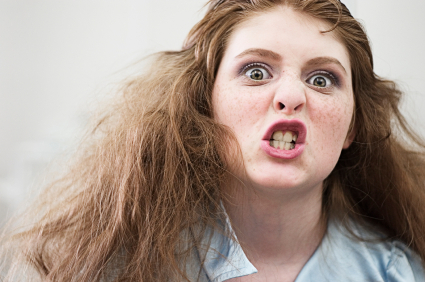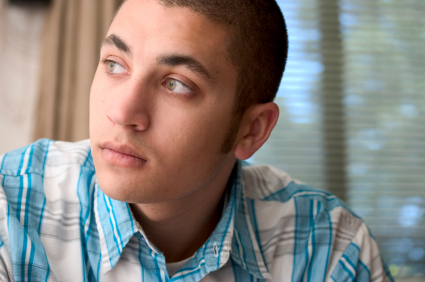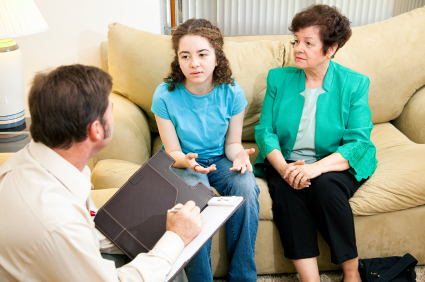Irritable, Elated, And Combined Bipolar Subtypes in Children Are Similar
Research on early-onset bipolar disorder has often hinged on identifying the key characteristics of the disorder. At a symposium on the course of bipolar disorder in children at the 2013 meeting of the American Academy of Child and Adolescent Psychiatry (AACAP), Jeff Hunt of Brown University discussed findings from COBY, the Collaborative Child Bipolar Network. He described the course of illness in 446 children with bipolar disorder, including 10% who had irritability at baseline, 15% who had elated mood at baseline, and a majority (75%) who had both irritability and elation at baseline.
Most factors such as positive family history of bipolar illness and comorbidities including attention deficit hyperactivity disorder (ADHD) did not differ across the three groups. The three subtypes (irritable, elated, or mixed) did not remain stable, and most of the children eventually converted to the combined irritable and elated subtype. These data contrast with those of Ellen Liebenluft et al., who found that those with severe mood dysregulation or chronic irritability (but not other key characteristics of bipolar disorder) did not go on go on to receive a bipolar diagnosis and tended not to have a family history of bipolar disorder.
BP-NOS Often Develops Into Bipolar I or II Disorder
At a symposium on new research on juvenile bipolar disorder at the meeting of the American Academy of Child and Adolescent Psychiatry (AACAP) in 2010, David Axelson of the University of Pittsburgh summarized the longitudinal course of sub-syndromal bipolar disorder in children and adolescents as observed in a research program called COBY (Course and Outcome of Bipolar Youth). Axelson called attention to the 35% of the bipolar spectrum children who had a diagnosis of bipolar NOS (not otherwise specified) as opposed to the 58% who had full-blown bipolar I illness. BP-NOS is defined as illness not meeting criteria for bipolar I or II, including duration of illness and number of symptoms, so it includes presentations in which there is one fewer symptom present than the four required for a diagnosis of euphoric mania or the five required for a diagnosis of irritable mania. The mania or hypomania in BP-NOS must occur for at least four hours/day for at least four days.
Overall, the COBY researchers found that among children with a BP-NOS diagnosis, it was the duration of the manic symptoms that tended to fall short of the requirements for a BP-I or BP-II diagnosis rather than any qualitative difference in clinical presentation. The COBY study followed 446 BP-NOS patients aged 7 to 17 for an average of five years using the LIFE methodology, which rates severity of ill states on a weekly basis. The assessments of LIFE data were conducted at an average of eight-month intervals.
Axelson’s key point was that within the 5-year period of the study, 45% of the children with BP-NOS, which some would consider a subthreshold bipolar disorder, converted to a full-blown bipolar disorder; 23% to a BP-I presentation and 22% to a BP-II presentation. If there was a positive family history of mania, it was even more likely that a child with BP-NOS would convert to BP-I or BP-II (58.5%, as opposed to 35.5% when there was no positive family history for mania).
Children with BP-NOS are almost as highly impaired as those with BP-I and BP-II illness, and clearly deserve early treatment intervention, both to alleviate problematic symptomatology, but also to possibly prevent the conversion to more full-blown BP-I and II syndromes. Axelson stressed the importance of treating those with BP-NOS who do not convert to BP I or II, because they too remain substantially impaired.
Bipolar Disorder in Children Continues into Adulthood, Early Intervention Important
At a symposium on new research on juvenile bipolar disorder at the meeting of the American Academy of Child and Adolescent Psychiatry (AACAP) in 2010, researchers shared new findings about juvenile bipolar disorder. One was Kathleen Merikangas’ finding published in AACAP’s journal in 2010 that the incidence of Bipolar I and II disorders is substantial in the child population (2.6%), and most children with the illness are severely impaired. This estimate of the incidence of bipolar disorder in children approaches the 3.0% incidence of the disorder in adults.
Another finding came from Janet Wozniak of Massachusetts General Hospital. Wozniak followed children with a bipolar diagnosis longitudinally and found substantial evidence of impairment and continuity of the diagnosis over 2-3 years. She found that 73.1% of the original 78 children (aged 10.5 years at first evaluation) were still fully symptomatic with a BP-I diagnosis after 3.6 years of follow up. Only five children of the 78 achieved a euthymic status without treatment. Nine children became euthymic while on treatment, while 5 experienced subthreshold major depressive disorder and another six had subthreshold manic symptomatology.
Dr. Wozniak indicated that these data were similar to Barbara Geller’s eight-year followup study, in which patients remained symptomatic for two-thirds of the weeks of followup and 44.4% continued to show full-blown manic episodes. Researchers Barbara Geller, David Axelson, and Joe Biedermann all have found that while there is a high incidence of initial improvement or transient remission in childhood bipolar disorder, there is an equally substantial relapse rate, indicating that the considerable morbidity of childhood-onset bipolar illness continues into adolescence and young adulthood. Read more




